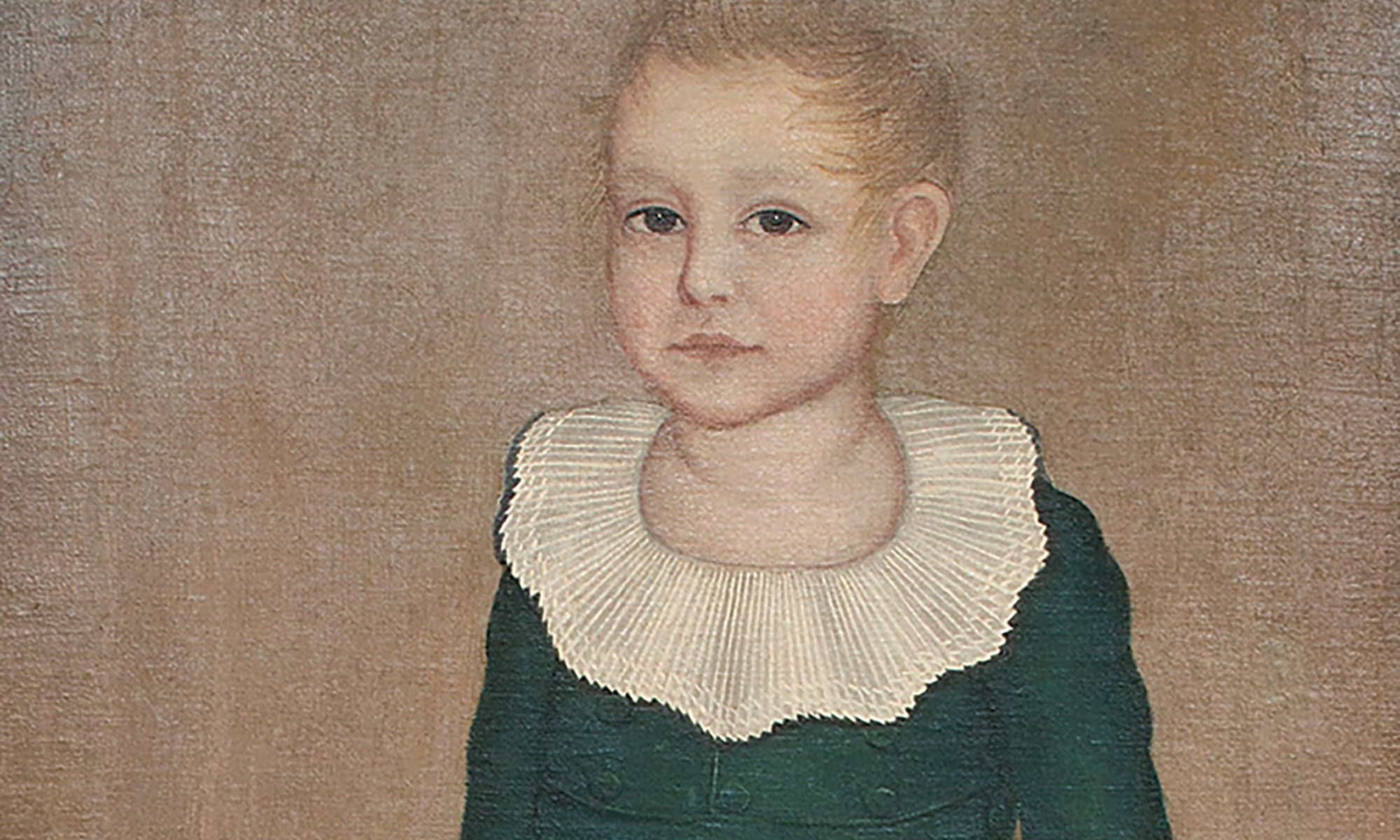Ammi Phillips, Portrait of Frederick A. Gale (around 1815) Photo by J. David Bohl, courtesy the American Folk Art Museum, New York
Of the hundreds—or possibly thousands—of portraits that itinerant American folk artist Ammi Phillips painted in his career spanning the early 19th century to the American Civil War, his likenesses of youngsters are his most beloved. Children’s faces represent a fraction of those that Phillips recorded but when he did, they numbered his most lively, with subjects wearing brilliant colors like red and green instead of austere black trimmed with lace.
Museums that hold Phillips’s portraits of children (including the National Gallery of Art, Metropolitan Museum, Philadelphia Museum of Art, Harvard’s Fogg Museum and the Clark Art Institute, among others) tend to prioritize displaying them—often at the expense of his portraits of adults. New York’s American Folk Art Museum (AFAM) is no exception, and will debut its newly received Portrait of Frederick A. Gale (around 1815) in MULTITUDES, an exhibition marking its 60th anniversary that opens on 21 January. This is the 11th Phillips painting to join the museum’s permanent collection, making it one of the most significant institutional collections of his work; it will be installed alongside another prized portrait by the artist, Girl in Red Dress with Cat and Dog (1830-35).
Portrait of Frederick A. Gale was gifted to the museum by collectors Lucy and Mike Danziger (she serves on the museum’s board of trustees). Their gift was made “with the aim of strengthening the museum’s ability to tell a multiplicity of important stories—not just about Phillips as an artist, but also about the importance of American vernacular portraiture as an art form and one that was becoming increasingly accessible”, says AFAM curator Emelie Gevalt.
“[Gale] represents a kind of archetypal portrait sitter for Ammi Phillips, who made his career depicting families and individuals from a burgeoning middle class in the rural areas where New York and Connecticut and Massachusetts all come together,” Gevalt explains. Frederick and his sister Mary Elizabeth, who were both painted by Phillips in bold full-length format, were the children of a grist mill owner. “We get a nice sense of the aspirational qualities of the sitter,” says Gevalt, pointing to the book tucked under Gale’s left arm indicating the value his family placed on education.
Phillips’s portraits began attracting curatorial and scholarly attention in the mid-20th century, and interest eventually translated to the art market. According to independent researcher David R. Allaway, who compiled a catalogue of Phillips’ work, Portrait of Frederick A. Gale was last offered for public sale at the 2007 Winter Antiques Show, where it reportedly sold for $2m.
“There’s no saccharine quality or overly sentimental quality, and the artist manages to really capture this beautiful sense of innocence without being cloying,” Gevalt says of the painting. “He gives children this quality of mystery even as they have this mischief as well.”

